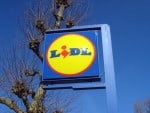An 8% revenue growth is Pfizer’s reward for 2016, despite what the company called a “challenging operating environment”.
Pharmaceuticals giant Pfizer is one of Ireland’s most prolific FDI companies, with the New York-headquartered company operating seven sites across the country.
Dublin is home to its Ringsend, Citywest and Grange Castle facilities, the latter a major element in the company’s worldwide R&D. Ringaskiddy and Little Island in Cork, along with Newbridge (Co Kildare) and Sligo complete the company’s Irish portfolio.
At the end of January the global firm released its 2016 and Q4 results: full-year revenues have risen to $52.8bn, an 8% rise over full-year 2015. Reported net income is up 4%, reported EPS 5%, adjusted income 7% and adjusted diluted EPS 9%.
“I was pleased with the company’s overall performance during 2016 and believe both of our businesses executed well despite a challenging operating environment,” said chairman and CEO Ian Read.
“We generated attractive operational revenue and earnings growth driven by our major products within both the Innovative Health and Essential Health businesses. In addition to strong business performance, we allocated our shareholders’ capital to a variety of value-creating initiatives that included company and product portfolio acquisitions, share repurchases, an increase in our dividend and ongoing funding for our R&D and commercial organisations.
“We are operating with a highly focused business structure and management team, providing us with the best opportunity to generate attractive operating revenue and earnings growth as demonstrated by our 2017 financial guidance,” Read said.
“Our strong in-market product portfolio and broad R&D pipeline include several potential first-in-class or best-in-class compounds in important therapeutic areas. I believe we are positioned for continued strong performance in 2017 and beyond, which will enhance our ability to deliver new therapies to patients and create value for our shareholders.”
We are operating with a highly focused business structure and management team, providing us with the best opportunity to generate attractive operating revenue and earnings growth as demonstrated by our 2017 financial guidance
KEY ACQUISITIONS
The company divides itself into Pfizer Innovative Health and Pfizer Essential Health, and has made a number of acquisitions in recent years – notably Hospira, Anacor Pharmaceuticals and Medivation.
Executive vice president, business operations and CFO Frank D’Amelio dug further into the results: “Pfizer-standalone revenues in 2016 grew 5% operationally, excluding the impact of foreign exchange as well as legacy Hospira and legacy Medivation operations, reflecting solid underlying growth despite significant headwinds from product losses of exclusivity and the decline in revenues for Prevnar 13 Adult in the US.
“During 2016, we completed the acquisitions of Anacor and Medivation, which added important revenue growth drivers to our Innovative Health business while we continued to integrate legacy Hospira operations into our Essential Health business. Finally, during 2016 we returned $12.3bn directly to shareholders through dividends and share repurchases.
“Our 2017 financial guidance at the midpoint of our ranges implies revenues slightly above 2016 and a 6% increase to adjusted diluted EPS compared to 2016 results. We expect to achieve this despite absorbing revenue headwinds totalling $4.5bn, comprised of $2.4bn resulting from anticipated generic competition, $1.2bn due to the pending disposition of HIS and $0.9 bn due to adverse changes in foreign exchange rates since 2016.
“Excluding the negative impacts of the pending disposition of HIS and foreign exchange, the midpoints of our 2017 revenue and adjusted diluted EPS guidance ranges reflect 4% and 10% operational growth, respectively. Notably, our guidance for adjusted diluted EPS anticipates share repurchases totalling $5bn in 2017, which are expected to more than offset potential dilution related to employee compensation programmes.”





